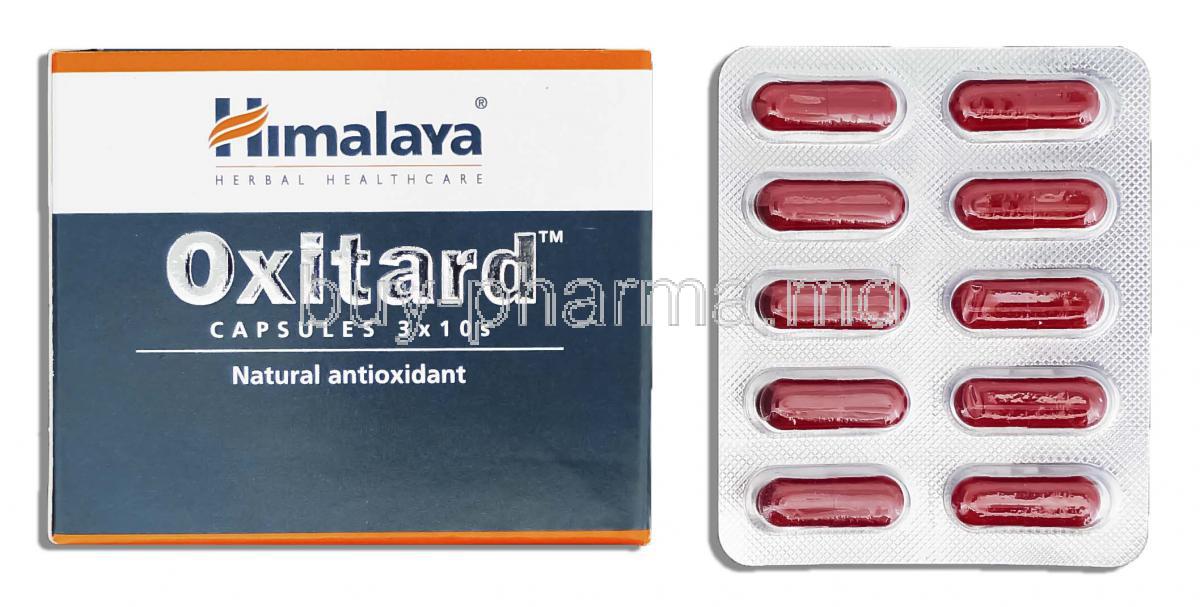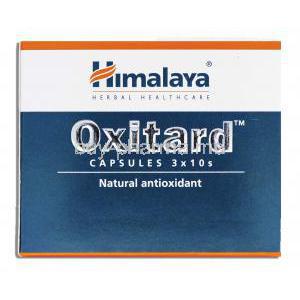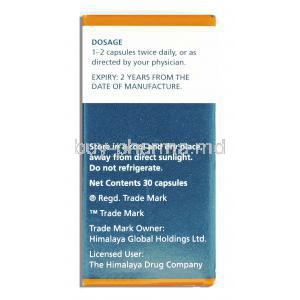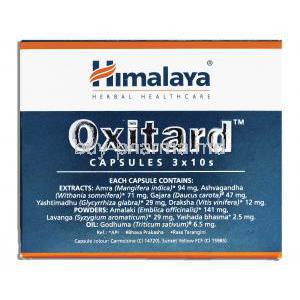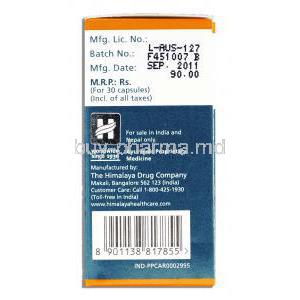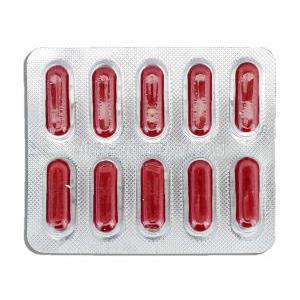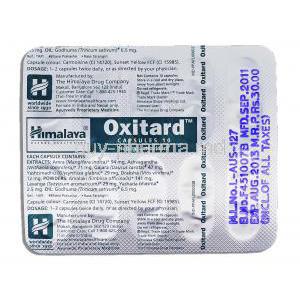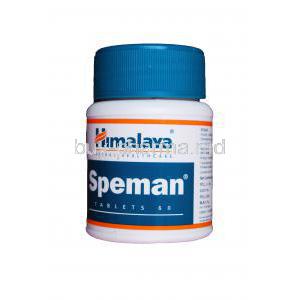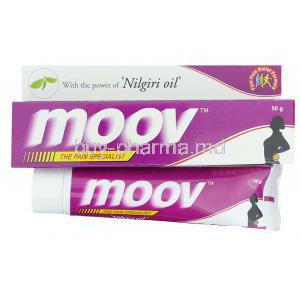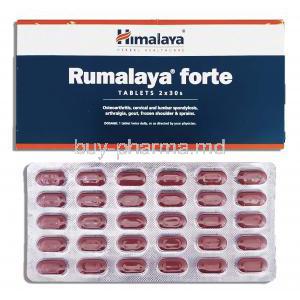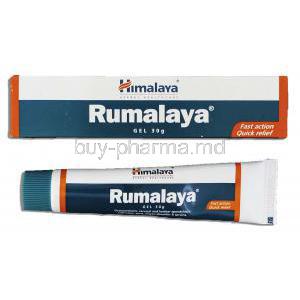1. Introduction to Himalaya Oxitard Natural Antioxidant
Himalaya Oxitard is a synergistic blend of traditional Ayurvedic botanicals, formulated to deliver potent antioxidant support. Designed to neutralize harmful free radicals, Oxitard helps protect cells from oxidative damage—an underlying factor in aging and chronic illnesses.
This herbal supplement is promoted for enhancing overall vitality, improving resistance to environmental stressors, and supporting long-term wellness. Rooted in Ayurvedic principles, Oxitard embodies a holistic approach by not just addressing symptoms but fortifying systemic balance and resilience.
2. Detailed Composition and Active Herbal Ingredients
- Vitis vinifera (Grape Seed Extract): Rich in oligomeric proanthocyanidins, known for their powerful free-radical scavenging action.
- Mangifera indica (Mango Bark): Possesses immunomodulatory and anti-inflammatory properties.
- Rubia cordifolia (Indian Madder): Traditionally used to detoxify the blood and enhance skin health.
- Withania somnifera (Ashwagandha): A revered adaptogen that mitigates stress and supports adrenal health.
- Tinospora cordifolia (Guduchi): Known for rejuvenating the body and strengthening immunity.
These ingredients work in harmony to bolster the body's defense against oxidative stress, creating a therapeutic synergy far more impactful than isolated compounds.
3. Mechanism of Action: How Oxitard Works in the Body
Oxitard operates on multiple biochemical pathways to provide comprehensive antioxidant defense. At the cellular level, its phytochemicals neutralize free radicals, preventing lipid peroxidation and DNA damage.
Additionally, Oxitard enhances mitochondrial efficiency, preserving cellular energy and reducing oxidative fatigue. It also plays a role in immune modulation, supporting the body's natural defense mechanisms without overstimulation.
Its adaptogenic herbs further reduce inflammation and oxidative burden, offering support in chronic stress and systemic disorders.
4. Therapeutic Uses and Indications of Oxitard
- Oxidative Stress and Fatigue: Supports energy production and counters chronic tiredness.
- Skin Disorders: Beneficial in conditions like acne, eczema, and premature aging through internal detoxification.
- Cardiovascular Support: Promotes vascular integrity and lipid profile normalization.
- Adjunct in Chemotherapy: Reduces oxidative load induced by cancer treatment regimens.
Its multifaceted effects make it a suitable supplement for those seeking natural protection against lifestyle-related degenerative conditions.
5. Off-Label and Adjunctive Uses of Oxitard
- Chronic Inflammatory Diseases: May assist in managing inflammatory bowel conditions, arthritis, or lupus.
- Neuroprotection: Used to support memory, focus, and neuronal health in cognitive fatigue and mild age-related decline.
- Sports Recovery: Offers cellular recovery benefits for endurance athletes and fitness enthusiasts.
- PCOS and Fertility: Utilized in hormonal balance support, potentially beneficial in managing oxidative aspects of PCOS.
6. Recommended Dosage and Administration Guidelines
Standard Dosage: One to two capsules twice daily, or as directed by a healthcare provider.
General Use: Continuous use for 6–8 weeks is often recommended for noticeable antioxidant benefits.
Therapeutic Use: Dosage may be adjusted based on individual health needs and clinical supervision.
It is best consumed after meals with lukewarm water to facilitate optimal absorption and gastrointestinal tolerance.
7. Common and Rare Side Effects of Himalaya Oxitard
- Common: Mild bloating, nausea, or altered bowel patterns in sensitive individuals.
- Rare: Hypersensitivity reactions such as rash, itching, or swelling due to herbal constituents.
- Long-Term Use: No major adverse effects reported; however, periodic monitoring is advised during extended use.
In the event of any persistent or severe symptoms, discontinuation and medical consultation are recommended.
8. Important Precautions and Careful Administration Practices
While generally safe, Oxitard should be used cautiously in individuals with chronic illnesses such as autoimmune disorders, diabetes, or cardiovascular disease. Medical supervision is strongly advised in these cases.
- Patients undergoing immunosuppressive therapy should avoid unsupervised use.
- Monitor for symptoms of antioxidant overload, especially when combined with other supplements.
- Always adhere to the prescribed dosage—more is not necessarily better and may lead to imbalances.
Responsible use ensures that the therapeutic potential of Oxitard is fully realized without compromising safety.
9. Contraindications for Oxitard Use
Oxitard is generally well-tolerated, but certain individuals must avoid its use due to potential risks associated with their health status or sensitivities.
- Known Hypersensitivity: Individuals with allergies to any of the herbal components such as grape seed, mango bark, or Indian madder should not use Oxitard due to risk of allergic reactions.
- Autoimmune Disorders: Patients with conditions like lupus, multiple sclerosis, or rheumatoid arthritis should not take Oxitard without explicit medical clearance, as some herbs may modulate immune responses.
- Cancer Therapy Patients: Use in individuals undergoing intensive chemotherapy or radiation therapy must be guided by an oncologist. Certain herbs may interfere with treatment outcomes or interact with chemotherapeutic agents.
- Allergy History: Avoid use in individuals with a prior history of hypersensitivity to any ingredient present in the formulation.
10. Drug and Herbal Interactions with Oxitard
Due to its multi-herbal composition, Oxitard may interact with both pharmaceutical and herbal agents, necessitating informed administration.
- Anticoagulants and Antiplatelets: Grape seed extract may potentiate the effects of warfarin, aspirin, or clopidogrel, increasing the risk of bleeding.
- Immunosuppressants and Corticosteroids: Concurrent use with agents like prednisone, cyclosporine, or tacrolimus may alter immune function unpredictably.
- Other Antioxidant or Adaptogenic Supplements: Excessive cumulative antioxidant intake can paradoxically impair cellular signaling; monitor for fatigue, dizziness, or metabolic disturbances.
- Antihypertensive and Antidiabetic Medications: Herbs like Ashwagandha and Guduchi may lower blood pressure or blood glucose, necessitating dosage adjustments.
11. Special Population Use and Administration Considerations
11.1. Use in Elderly Patients
Older adults often have altered pharmacokinetics and multiple comorbidities. For this group:
- Dosage may need to be reduced due to slower hepatic and renal metabolism.
- Polypharmacy increases the risk of interactions; careful medication reconciliation is essential.
- Beneficial in managing oxidative stress linked to neurodegeneration, atherosclerosis, and cellular senescence.
11.2. Use in Pregnant Women and Nursing Mothers
- Safety Data: There is insufficient clinical evidence supporting the safety of Oxitard during pregnancy. It should only be used when the potential benefit justifies the risk, under supervision.
- Hormonal Interference: Certain herbs may have subtle effects on hormonal pathways, potentially influencing pregnancy outcomes.
- Lactation: Active herbal compounds may pass into breast milk; therefore, use during nursing should be strictly physician-guided.
11.3. Use in Pediatric Populations
Use in children is not broadly recommended without pediatric consultation:
- Minimum Age: Generally not advised for children under 12 years of age.
- Dosage: Must be determined by a healthcare professional with experience in pediatric or Ayurvedic medicine.
- Monitoring: Growth patterns, liver function, and allergic reactions should be observed during use.
12. Overdose Risks and Emergency Measures
Though Oxitard is a herbal product, excessive intake can lead to adverse effects.
- Symptoms of Overdose: May include nausea, vomiting, dizziness, hypotension, and gastrointestinal discomfort.
- Emergency Steps: Discontinue use immediately. Seek medical attention if symptoms are severe or persistent.
- Preventive Approach: Never exceed the recommended dosage. Use only under qualified supervision in therapeutic scenarios.
13. Proper Storage Instructions and Shelf Life
Maintaining product integrity requires appropriate storage measures.
- Temperature: Store below 30°C (86°F) in a dry, well-ventilated area.
- Humidity Control: Keep away from damp or humid environments to avoid degradation.
- Shelf Life: Observe expiration date printed on the packaging. Discoloration, odor, or softening of capsules indicates potential spoilage.
14. Safe Handling and Packaging Precautions
Proper handling safeguards the supplement's efficacy and safety.
- Contamination Prevention: Always handle with clean, dry hands. Do not touch capsules with wet fingers.
- Seal Integrity: Ensure the blister pack or bottle is sealed and intact before first use. Broken seals may compromise quality.
- Disposal: Discard expired or unused capsules responsibly. Do not flush down the toilet or discard in open environments.

